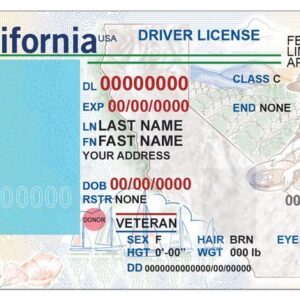When it comes to protecting the very people who care for us—our nurses and healthcare workers—health insurance isn’t just a benefit, it’s a lifeline. From staff RNs employed full-time in bustling hospitals to per-diem travel nurses hopping between assignments, each professional faces unique challenges in finding the right coverage. Let’s explore the full landscape of options—what they cover, who they’re best for, and how to compare them side by side—so you can make an informed choice that keeps you healthy, financially secure, and focused on patient care.
Understanding Your Health Insurance Landscape
Before diving in, it helps to see the big picture. Broadly speaking, nurses and healthcare workers choose from:
- Employer-Sponsored Health Insurance
- Individual & Marketplace Plans
- Professional Association & Union Plans
- Government Programs (Medicare, Medicaid)
- Short-Term & Travel-Nurse Insurance
- High-Deductible Plans & Health Savings Accounts (HSAs)
Each path varies by cost, network access, flexibility, and eligibility. What’s right for a full-time oncology nurse may not suit a per-diem ICU nurse. Below, we break down each category, compare their pros and cons, and share key insights.
Employer-Sponsored Health Insurance
Most full-time staff nurses enjoy access to group plans negotiated by their employer. These group health insurance plans often include:
- Comprehensive coverage (hospitalization, outpatient care, prescription drugs)
- Lower premiums, thanks to employer subsidies
- Additional benefits such as dental, vision, life, and disability
- Guaranteed issue—you can’t be denied based on health status
Because employers negotiate rates, group plans tend to be more affordable than buying solo. Coverage tiers usually mirror these metal levels: Bronze, Silver, Gold, and Platinum, with trade-offs between premium costs and out-of-pocket expenses.
Pro tip: Review your open-enrollment paperwork carefully to understand copays, deductibles, and network restrictions.
Ideal for: Full-time, W-2 nurses who want stability and the peace of mind that comes with robust employer contributions.
Individual & Marketplace Plans
For part-time, per-diem, or self-employed nurses, the Health Insurance Marketplace® (established under the Affordable Care Act) offers a pathway to coverage. Plans sold here must cover ten essential health benefits, including:
- Ambulatory patient services
- Emergency services
- Hospitalization
- Maternity & newborn care
- Mental health & substance use disorder services
- Prescription drugs
- Rehabilitative services
- Laboratory services
- Preventive & wellness services
- Pediatric services (children)
Learn more about what Marketplace plans cover on the Healthcare.gov site and compare metal tiers to balance premiums vs. out-of-pocket costs.
Pros:
- Tax credits for qualifying incomes
- Guaranteed coverage regardless of pre-existing conditions
- Flexibility to choose different carriers
Cons:
- Premiums can be higher than employer plans
- Network and plan details vary by state
Ideal for: Independent contractors, PRN nurses, or anyone who doesn’t have—or wants to leave—employer coverage.
Professional Association & Union Plans
Many nursing associations and labor unions negotiate group-style plans for their members. Examples include:
- American Nurses Association (ANA) membership plans
- National Nurses United (NNU) union plans
- Specialty groups like the Emergency Nurses Association
These plans often mirror employer group benefits but are available to association members regardless of their workplace. They may provide:
- Group pricing
- Supplemental coverage options (e.g., accident, critical illness)
- Career-development perks bundled with benefits
Note: Membership dues apply, but the accessible networks and advocacy support can be well worth it.
Ideal for: Nurses who frequently change jobs, travel nurses who maintain a home-base membership, or anyone seeking the bargaining power of collective enrollment.
Government Programs for Healthcare Workers
Medicaid
Low-income healthcare workers may qualify for Medicaid, which provides free or low-cost coverage. Eligibility and benefits differ by state, so check your local Medicaid office to see if you qualify.
Medicare
Though typically for those 65+ or with certain disabilities, Medicare Part A (hospital insurance) and Part B (medical insurance) can apply to younger workers with qualifying conditions. Healthcare workers under 65 can sometimes maximize dual eligibility if they have chronic illnesses.
Insight: For nurses nearing retirement age, understanding Medicare buy-in provisions and supplemental “Medigap” policies is critical to avoiding coverage gaps.
Short-Term & Travel-Nurse Insurance Options
Travel and contract nurses face intermittent assignments and variable pay—making continuous coverage a challenge. Short-term plans fill the gaps between assignments, offering:
- Affordable monthly premiums
- Temporary coverage (30 to 364 days)
- Basic benefits: emergency care, hospital stays, prescription drugs
Similarly, many travel-nurse agencies provide agency-sponsored health plans with immediate activation on each new assignment. These often include:
- Medical, dental, vision
- International coverage (if traveling abroad)
- EAP (Employee Assistance Program) resources
For a thorough walkthrough, check out the travel-nurse guide at BetterNurse: Travel Nurse Health Insurance Guide
| Option | Coverage Duration | Cost | Best For |
|---|---|---|---|
| Agency-Sponsored Plan | Assignment-based | Low employee share | Nurses on long travel contracts |
| Short-Term Individual Plan | < 1 year | Budget-friendly | Gaps between assignments |
| Marketplace Plan | Annual | Varies, with tax credits | Home-base coverage for contract nurses |
| Association Plan | Ongoing | Dues + premiums | Independent travelers maintaining membership |
Tip: Always confirm whether short-term or agency plans count as “minimum essential coverage” to avoid Marketplace penalties.
High-Deductible Plans & Health Savings Accounts (HSAs)
High-Deductible Health Plans (HDHPs) combine lower premiums with higher deductibles (often $1,500+). When paired with an HSA, you get:
- Tax-deductible contributions
- Tax-free withdrawals for qualified medical expenses
- Rollover balances year to year
This strategy is powerful for younger, healthy nurses who want to build a medical savings cushion. But remember: you frontload costs until your deductible is met.
Key Comparisons and Implications
Here’s how to decide among these pathways:
- Cost vs. Coverage
- Employer plans usually win on cost, but offer less choice.
- Marketplace plans and association plans give more flexibility at higher sticker-price.
- Stability vs. Mobility
- Full-time staff benefit from stability and predictable open-enrollment windows.
- Travel and per-diem nurses need portable, gap-friendly solutions.
- Network Access
- HMOs = lowest premiums but strict in-network rules.
- PPOs/EPOs sacrifice some savings for out-of-network freedom.
- POS plans blend the two.
- Tax Advantages
- Marketplace tax credits can offset individual premiums.
- HSAs provide triple tax benefits (deductible contributions, tax-free growth, tax-free withdrawals).
- Supplemental Needs
- Accident or critical-illness riders can protect against high unexpected bills—especially important for nurses’ shift-heavy schedules.
Insight: A good rule of thumb is to project your annual healthcare use (office visits + prescriptions + any planned procedures), then compare true out-of-pocket max vs. premiums. Don’t let a low premium lure you into overwhelming surprise costs down the road.
Making Your Decision: A Step-by-Step Checklist
- Assess Your Employment Status
- W-2 full-time → check HR’s group plan
- 1099/self-employed/part-time → explore Marketplace or association plans
- Estimate Your Healthcare Needs
- Number of anticipated doctor visits
- Prescription drug costs
- Potential specialist care
- Compare Plan Types
- Use side-by-side comparisons charts (see table above)
- Factor in premiums + deductibles + copays + coinsurance
- Check Eligibility for Subsidies
- Visit Healthcare.gov
- Review income thresholds for tax credits
- Review Network & Pharmacy Coverage
- Confirm your preferred doctors are in-network
- Verify prescription tiers
- Look at Additional Benefits
- Dental, vision, EAP, wellness programs
- On-call nurse hotlines or telehealth credits
- Finalize & Enroll
- Note deadlines: open-enrollment vs. special-enrollment
- Keep all documents in a safe place
Conclusion
Health insurance might feel like another specialty chart to decode, but it’s one of the most critical tools in a nurse’s toolkit. The right plan protects your health, your financial well-being, and ultimately your ability to deliver the very best patient care. Whether you lean on an employer-sponsored group, navigate the Marketplace as an independent, tap into your professional association’s bargaining power, or blend HDHPs with HSAs—choose thoughtfully, compare rigorously, and don’t hesitate to ask your peers or benefits advisors for insights. A little research now can prevent a world of worry later—and that’s peace of mind every healthcare hero deserves.






